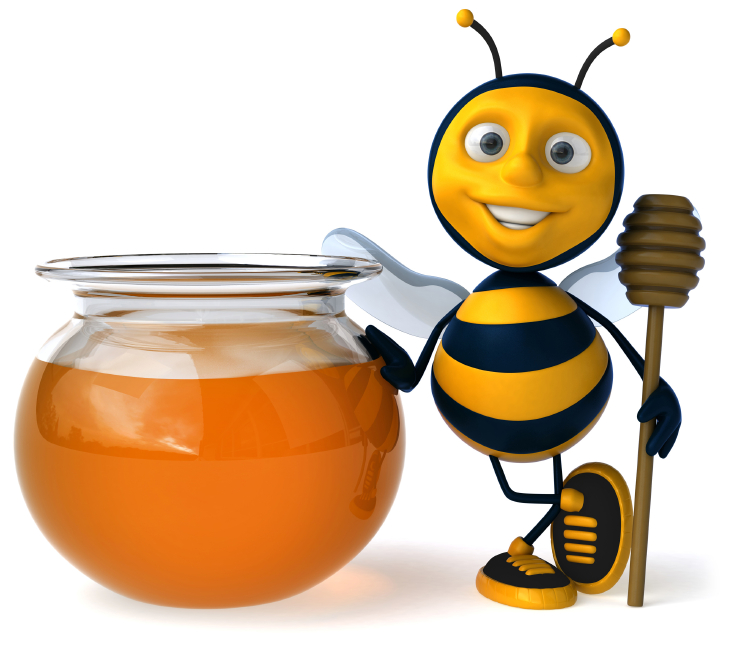Altai honey. The benefits of honey. Altai Krai
Altai Krai
Altai is geographically located in the North-Western slopes of the vast Altai-Sayan mountain country and the South-Eastern edge of the West Siberian plain. Is the subject of the Russian Federation and is located in the Siberian Federal district, on the South-East of Western Siberia. The administrative center of the Altai region is Barnaul. In the composition of the Altai territory 11 cities, 30 urban-type settlements. Established on 28 September 1937.
It shares borders with Kazakhstan, Novosibirsk, Kemerovo areas, Altai Republic. On the territory of Krasnoyarsk Krai steppe and low-mountain natural areas: Kulunda steppe, Rudny Altai, Ob plateau, foothills of Altai.
Since a large part of the territory of the Altai territory lies on the plain, and is characterized by small absolute height: 79 m (lake Bolshoye yarovoye) in the Western part of the Kulunda plain to 300-320 m in the South-East of the Priobskoye plateau. In the extreme South of Altai region came close to the middle Mountains (the highest point Ч Royal white, 2298 m).
The climate of the Altai region has pronounced continental features: cold, long, snowy winters and short, warm, sometimes hot summer.
In the Altai territory a lot of different rivers, from small streams to the largest rivers in Siberia. The main river of the region Ч flowing Ob river (within region -493 km), which is formed by the confluence of Biya and Katun, 20 km southwest of Biysk.
On the plains of the Altai territory a lot of lakes (more than 5000), 60% of them fresh, the other salty and bitter-salty. Twenty-five large lakes with an area over 10 km2. The biggest lake in the territory of the Kulunda, its area is 728 km?.
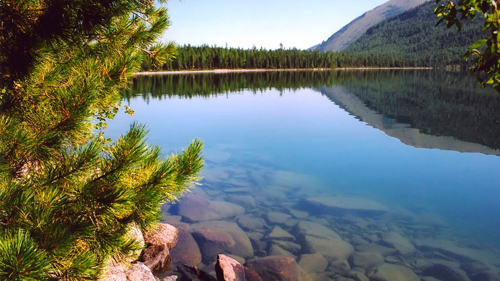
In the Altai region has many mineral springs, there are over two thousand. Radon is well known for its thermal waters, balneological resort Belokurikha.
The main wealth of Altai Krai land resources, they consist of arable land (6888367 ha), perennial planting (9600 ha), hayfields and pastures (3917305 hectares) fallow land (hectares 58537). Under cultivation, 41.2% of the land territory.
The forest resources in the region is 26% of the total area. Along the rivers Barnaulka, Kasmala, Kulunda, Burle stretch found only in the Altai belt forests pine forests growing on sandy river banks.
In the province grows about 2000 species of vascular plants, representing two thirds of species diversity of Western Siberia. Among them there are representatives of endemic and relict species.
Very rich fauna of the Altai territory. In the region there are 33 wildlife areas. Their total area is 773.1 thousand hectares or less than 5 % of the land. Approved 100 natural monuments, including 54 geological, 31 water, 14 and 1 Botanical complex. Currently identified areas of growth of plants and habitats of animals belonging to rare or under threat of extinction that do not have the status of specially protected territories.
Altai Krai is one of the main mining regions of Russia. The first primitive design copper ore (Chud mines) began here more than 2.5 thousand years ago. In 1719 Ц 1721. Russian prospectors in the upper Charysha Alley and discovered deposits of copper ore, the development of which is associated with the name of the Ural breeder A. N. Demidova.
The population of the Altai region is estimated at 2 491 627 people (census 2010), is a 20-th place in population among the subjects of the Russian Federation and in some 1.8% of the population of Russia.
In the Altai territory more than 100 nationalities live: 92 % of the population are Russians, the next biggest Ч the Germans (3,05 %), Ukrainians (2 %); all others Ч 3 %.
There are a lot of religious communities. The largest Orthodox. There are also Catholic and Lutheran communities, runs a mosque and a library with books in Arabic and Russian, acts the Jewish community. The Buddhist traditional Sangha of Russia "AK-Burkan".
The head of the Executive authorities of the Altai territory is the head of the regional administration (the Governor). Administration Ч the Executive body, the legal successor of the regional Executive Committee. A representative legislative body is the Altai regional Legislative Assembly.
Industry in the Altai region the leading place is occupied by engineering, Metalworking, light and food industries. In the region of more than 2 thousand enterprises, of which about 400 large and medium. This is a promising sector of the economy, such as tourism.

The province is located In the resort of Federal value Belokurikha, develop tourist-recreational zone "Biryuzovaya Katun" and "Sibirskaya Moneta". Other popular destinations in the region Ч salt lake in the West of the region (village, Zavyalovsky district), foothill areas of Altai (Altai, Kuryinsky, Zmeinogorsky).
At the edge of a developed network of Railways. Their total length -1803 miles, and 866 kmЧ railway tracks of industrial enterprises. Most major railway stations: Altay, Barnaul, Biysk, Rubtsovsk, Alejskaja. Length of public roads Ч 15,5 thousand km. All district centers are connected with the Barnaul roads with a firm covering. The territory is crossed by Federal highway M52 "Chuysky trakt".
Passenger transportation serves 78 % of all settlements. Trams and trolleybuses operate in Barnaul, Biysk, rubcovsk. In addition, in the region there are 8 of 47 bus stations and passenger autostations.
Barnaul airport provides air connections with 30 cities of other regions of the country and abroad. There is also an airport in the city of Biysk.
The total length of navigable waterways Ч about 650 km for Navigation on the rivers Ob, Biya, Katun, Chumysh, Chryso. Rivers has established the Marina and river stations.
In 2010, higher education in the Altai region give 12 state universities, as well as several branches and representative offices of universities from other cities of the country.
Most theatres is located in Barnaul. In Biysk works founded in 1943, City drama theatre.
Honey
In this article we have gathered information about the benefits and properties of honey. The benefits of honey depends primarily on its unique composition, which contains over 300 different substances, including vitamins and minerals. Honey is unique in that it is harvested from the depths of nature, and handed down to us in a fully ready-to-eat form from the hands of the younger workers Ц bees. And if to speak more precisely: not from the hands, but directly from the ventricles striped friends, in which honey is saturated with enzymes, organic, disinfectant and other nutrients.
This is a truly natural and healthy food that fills any gap in daily nutrition. That is why people who are aware of the benefits of honey, try to use it regularly! Friends, now you will know what he is so helpful and so will try to use it more often!
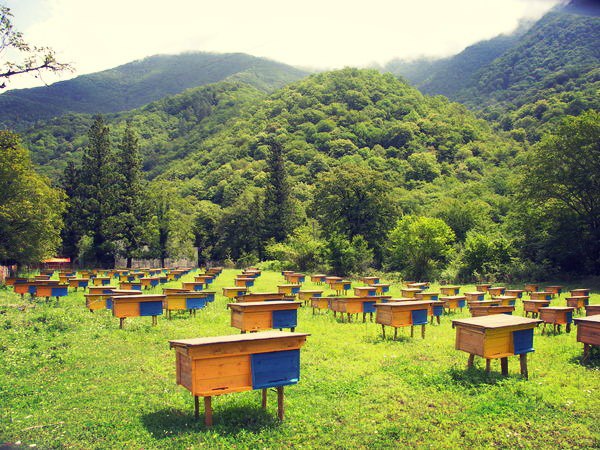
What is a honey?
A viscous liquid, sweet taste with a pleasant odor, obtained by honey bees from the nectar or flowers, or honeydew from plants. Therefore, honey is divided into two main types: floral and honeydew. If the bees were fed sugar syrup, inverted sugar, starch or artificial glucose, as well as if the collection was from the sweet juices of fruits, vegetables, honey is considered to be unnatural, and he does not have the useful properties, as will be described below.
That means flower and honeydew?
- Flower: flowers collected from different plants sugary liquid called nectar. Nectar can contain up to seven different types of sugars. The quantity, sweetness, and taste, secreted by the flower the nectar, depends on external factors and the biological features of the plant. For example, at the beginning of flowering the number of nectar more, and after the pollination of flowers Ц less. Or, for example, at high humidity Ц the amount of nectar more, but it is less sweet, and Vice versa.
- Honeydew: is going on the plant leaves of the sweet liquid of vegetable or animal origin Ц pad. In fact the pad is the secretion of insects that feed on SAP and nectar of plants. However, bees do not disdain and a great pleasure to convert these captures in honeydew honey.
Which is healthier honey: honeydew or flower?
Honeydew honey is considered to be more useful than floral. As honeydew contains more amino acids, nitrogenous substances, enzymes , minerals and organic acids. In Western Europe Ц it is called forest honey, and appreciated it more. He usually has almost no aroma and darker. Nevertheless, collected in coniferous forests of the honeydew honey, the taste and color is very often not inferior to the flower. Well, now you know what forest honey, what do you know about hazel?
Useful than natural honey?
Just look at its composition: carbohydrates, organic acids and their salts, nitrogenous compounds (amino acids, amides, amines), mineral substances, vitamins, hormones, enzymes, higher alcohols, essential oils, coloring matter, phosphatides, sterols, terpenoids, and other lipids. This is due to the pharmacological therapeutic effect of honey. Recent studies show that regular consumption of honey in food improves immunity, making the body resistant to infections. Here's a delicious way to a strong immune system. But again, like anything, there are caveats for people with different diseases such as diabetes.

This sweet product is utilized 100%, what can be said about any other (white bread, for example, is absorbed at 96%, meat 95%, and milk at 91%). In addition it is very tasty, and using it for dessert, you'll deliver a whole range of vitamins and minerals. Just do not forget that adding honey to hot tea, you convert it into carbohydrates and lose a lot of nutrients. By the way about carbs. Due to the fast carbs of honey, you will quickly get energy, and considerable. For example, the caloric content of 200 g of honey approximately, calories 180 grams of cheese, 350 g minced meat or 8 oranges medium size.
What vitamins contains, and what it does?
As a result of the researches in the honey found in the following vitamins: B1, B2, B3, B5, B6, E, K, C and carotene (provitamin a). The composition may be added and other vitamins depending on the type of plant and the time of collection. It also found biogenic stimulators, which increase the vital functions of the body. Clinical trials have shown the presence of substances stimulating the growth of cells. The vitamins of honey have higher activity than synthetic, because they are combined with mineral salts and other natural substances, amplifying their effect.
What minerals it contains?
Rich microelement composition: potassium, calcium, magnesium, sodium, sulfur, phosphorus, chlorine, iron, iodine, zinc, fluorine, copper, cobalt, manganese. That's not the whole set, there are also: silver, antimony, titanium, chromium, molybdenum, strontium, boron, lithium, aluminum, lead, Nickel. Such a rich microelement composition strongly affects physiological and biochemical processes in the body.
So, for example, manganese and zinc play an important role in hematopoiesis, affecting the metabolism, promote growth and development. It is proved that the zinc increases the duration of action of insulin Ц the hormone of the pancreas and improves vision. Iron is part of hemoglobin, and is actively involved in redox processes in cells and tissues. Moreover, in the presence of copper hematopoietic function of iron is increased. By the way, the autumn honey 3 times more iron than in the spring. You can also a lot to say about the role of other trace minerals: cobalt, magnesium and so on. But this is a topic for another article.
In medical practice it is believed that the darker the honey, the more minerals. Indeed, honeydew honey is always darker than the flower, and it is really more micronutrients.
What kind of carbohydrates are presented, and why are they useful?
Presents simple sugars (monosaccharides) and their compounds: 38-40% fructose and 32-35 % glucose. They are not only a source of energy, but also have a therapeutic effect: regulate nervous activity, increase blood pressure, dilate blood vessels, improve cardiac muscle nutrition, improve metabolism, increase urine output and stop the bleeding.
It is known that sugar remains in the mouth from the breakdown by bacteria to form lactic acid and other acids, causing destruction of tooth enamel. Honey on the contrary, having antimicrobial effects, its regular use helps to disinfect the mouth. Those who have frequent oral diseases, ulcers and so, it is recommended to rinse your mouth 10-20% solution of honey water.
Which explains the antimicrobial effect?
This action is due to the natural content of volatile production. In ancient times, people used it in the treatment of purulent wounds. Note the devastating effect of honey on gram-positive cocci (streptococci and staphylococci), various bacilli, bacteria diphtheria parasites, and unicellular type amoeba, Trichomonas.
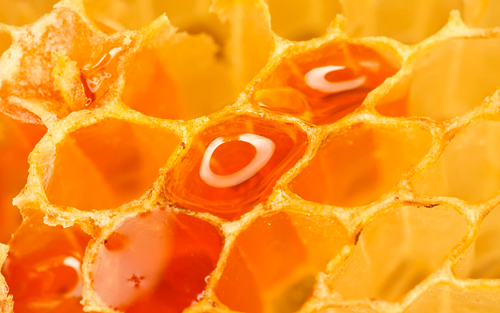
Effect on digestion?
Use of this product improves digestive processes. As explained by the doctors, this is due to the content of manganese and iron, which are the activators that accelerate the work of enzymes of digestion. He also has a mild laxative effect that will be useful to people suffering from constipation and sluggish bowel movements. Honey is recommended in the treatment of duodenal ulcer and hyperacidity of the stomach, as it reduces acidity of gastric juice.
How it accelerates the healing process:
This is because applied to a wound honey causes enhanced flow of the lymph (liquid part of blood) to the place of destruction and blood, which causes the mechanical washout of bacteria and a strong phagocytosis i.e. disinfection of bacteria. Indeed, if applied to the wound honey, in an hour you can see how it begins to rapidly perform fluid in the blood with the lymph. Quick wound healing is also associated with pronounced antimicrobial action, about which was spoken above.
Do i have to eat honey to children?
Studies of recent years have shown the exceptional value of honey bees as healthy food and a therapeutic agent for a growing child's body. This is due to the presence of a whole range of important biological substances, vitamins and minerals, which has a huge impact on development, and on strengthening the immune system. For example, the presence of folic acid helps not only to maintain the hemoglobin in the blood level of erythrocytes, but also very important for the development of the body. That is why pregnant women are recommended to consume folic acid as vitamins during pregnancy. For a child, only one spoon a day to bring his health is invaluable!
What other useful properties can be noted?
Note the positive effect in nervous diseases. It has sedative (calming) effect. For example, a glass of water with honey and consumed at bedtime, will ensure nervous patient quiet sleep. It is also known a positive effect in diseases of the eye.
It also contains plant hormones (hormonal substances) and hormones, which come from niukasti glands of bees, when she processes the nectar.
And what about allergies to it?
There are people who have individual intolerance to honey. The predisposition to this hypersensitivity is observed in 0.8% of men. Hypersensitivity is manifested in the following symptoms: severe dizziness, fever, General malaise, skin rash, vomiting, heaviness in the stomach. So, before you start treatment with honey, you need to make sure you are not allergic: hypersensitivity is sufficient to define the application of skin tests. Some experts, considering honey is a strong allergen, advise people who do not suffer from allergies to use it with caution, but people have allergies Ц not to use at all. In contrast, there is the reverse: the results of long-term studies show that honey can be used to treat certain types of allergies. And now widely introduced into clinical practice the methods allowing to treat some types of allergies due to specific and nonspecific destabilization of bee honey.
To summarize and note main therapeutic properties:
- increases the body's resistance to disease (immunity)
- has a bactericidal effect (antimicrobial);
- strong anti-inflammatory agent;
- has analgesic effect;
- has anti-allergic effect;
- promotes expectoration, and relieves cough;
- reducing agent
Honey that has retained its nutritional and medicinal properties need to be stored at a temperature of 5-10∞C in a dark container. Why? Studies have shown that the longer and at higher temperatures the honey is heated (this also applies to direct sunlight and ultraviolet light), the faster it decreases antimicrobial effect. And remember that the honey produced by the bees from sugar syrup, has not one of the above properties.
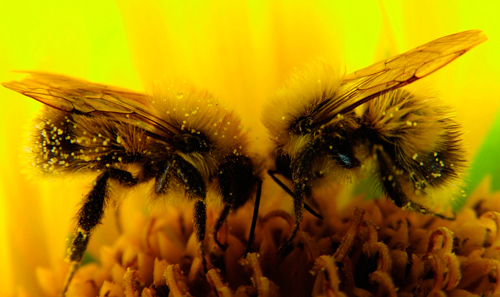
He can be immature?
Oddly enough, but it really applies to this concept. Mature honey Ц thick and almost transparent. To determine maturity, enough to take the spoon and rotational movement to recruit him: if he is layered with pleats, ribbon, spoon and drain with continuous threads, so he's Mature. There is evidence that a higher content of fructose makes the honey more liquid. For example, in honeydew honey has more sugar and minerals, it is denser than floral. However, the excessively large number of sucrose indicates a low quality of honey, it is likely that bees fed with sugar syrup.
So, honey contains b vitamins and vitamin C, minerals potassium, iron, magnesium, sodium, calcium, sulphur, chlorine, fructose, glucose, protein (the number varies depending on the type of honey). The quality of honey depends on pollen and nectar, collected by bees for processing.
Begin to describe the 8 reasons to eat honey
- due to the presence of particular substances honey exhibits antibacterial, antifungal, antiviral action;
- honey is rich in fructose, can be used by people with the disease of diabetes;
- buckwheat honey is rich in iron, which can significantly help people suffering from anemia;
- helps with colds and viral diseases. Has a beneficial effect on the respiratory system, kills virus, anti-inflammatory effect. Helps recover faster
- improves digestion
- promotes healthy bones and teeth that provides the body with calcium and keeps it in the body;
- to be used as an aphrodisiac, increases the productivity of sperm and their activity that can help some couples to have children;
- strengthens the immunity of the person.
In addition to the benefits honey can also cause harm to the human body. This is particularly true of people who are allergic to pollen. This should not be treated lightly, because the use of honey Allergy can cause pulmonary edema and even suffocation. So, if You've never used honey, You need to start eating small servings a few grams, over time gradually increasing and at the same time to monitor the condition of the body.
In cosmetics honey is used as a means of improving the condition of skin and hair. Make masks for face, hands, and it is diluted in water and this water to rinse hair. Honey nourishes the skin, giving a healthy appearance skin and hair, gives the hair Shine and silkiness.
If you compare buckwheat, Linden and flower honey against common indicators, we can highlight that:
- most buckwheat is rich in iron,high in protein, has a distinctive flavour and quickly candy (crystallize);
- Linden honey is stored the original consistency for a very long time and compared with flower and buckwheat not candy long. It is most useful for colds thanks to the useful properties of Linden;
- flower honey quickly crystallizes, showing a positive effect on the cardiovascular and nervous system, is used as demulcent, very useful for children and aged people;
How to choose honey?
Honey varies in color, but it needs to have a translucent appearance, should not be cloudy and should not have any sediment that may indicate the presence of other additives. The smell of honey should be rich, honey with added sugar such has no smell. It needs to have a uniform viscous consistency.
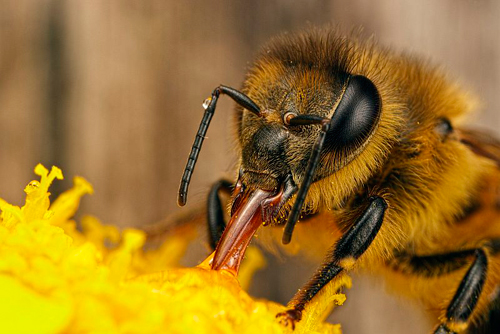
Summer is better not to buy candied honey, as it can be and last year's, and You do not know where and how it was stored so long.
How to store honey?
To store honey in a glass jar in a dark place inaccessible to light and the sun, the light and the sun can destroy some vitamins.
As honey to eat?
Honey is best taken in unchanged fresh. Honey is not subjected to heat treatment at a temperature above 40 degrees, along with the nutrients become harmful to the human body of toxins. Very useful is considered warm water with honey, this drink has a natural soothing effect, is well absorbed and will also help with colds, when the body just essential vitamins and fluid.
What kind of honey is more useful in the market or in the store?
The store often sell processed honey. And the process of its processing can affect the content of nutrients. Some unscrupulous manufacturers permapleat honey to give it a beautiful look. Choose quality industrial honey production is possible certainly if yourself check out in the sanitary laboratory.
But the regular honey from the beekeeper, too, can be of poor quality, it may contain additives or may be harmful for the reason that pollen was going in inappropriate places (e.g., chemically-treated fields). In this case, a good honey You can buy from a beekeeper you can trust.
Let's Do some conclusions: of course honey is great, but you need to be able to properly choose, store and use, because the benefits and harms of honey are next for Allergy sufferers. People who regularly consumed honey it gives good health, beauty and longevity.
Altay Honey
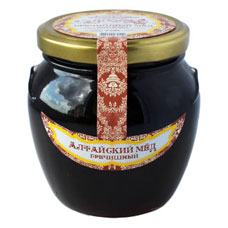
Natural honey Altai
for centuries Honey is valued for its unique properties and exceptional taste. Altai honey is a widely known in Russia and far beyond its borders. Medicinal herbs and plants of meadows, foothills and mountains of Altai environmentally friendly, are a great bee plant. The honey collected by the bees from these herbs has its own unique flavor and aroma. But the main value of Altai honey in its healing properties. Eating the honey, You get a wonderful combination of fragrant and delicious product with health benefits.
Altay Honey "BUCKWHEAT"
HONEY "BUCKWHEAT" Buckwheat honey Ч one of the most famous varieties of dark honey. Belongs to high-quality varieties of honey.
Buckwheat honey has a pleasant spicy aroma and a sharp taste, from which a tickle in the throat. Once is enough to try buckwheat honey, then it is easy to distinguish from other varieties. It contains more than 75% glucose and fructose, more than any bright varieties, proteins and minerals, especially iron.
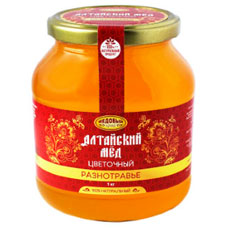
Altay Honey "HERBS"
HONEY "HERBS" - a concentrated power of herbs and plants, wild flowers of Altai.
Strengthens the immune system, restores the body after physical and mental overwork, operations; provides preventive, curative, antibacterial, anti-microbial effect; has pronounced soothing, regenerating (reducing), analgesic and wound-healing properties; displays the body of toxins; used in multiple sclerosis and insomnia in diseases of the internal organs, has a positive effect on the kidneys and urinary system, normalizes intestinal flora, cures cough, bronchitis, gastritis, ulcer and cancer.
Altay Honey "TAIGA"
HONEY "TAIGA" is one of the most high-quality varieties of honey, rich in wild medicinal properties of forest herbs and flowers.
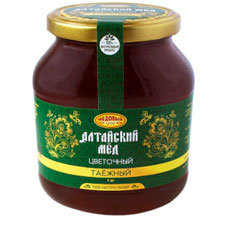
Has a tonic, sedative, analgesic effect. Helps with headaches, vegetative-vascular dystonia, insomnia, heart disease, colds and pulmonary diseases, gastric ulcer and duodenal ulcer, gastritis, diseases of the liver; stabilizes pressure and reduces swelling of cardiac origin.
Due to the high content of Angelica, this variety is unique in taste and bright aroma, taiga honey is used not only as medicine but also as a sweet treat.
the origin of the taiga Honey is a delicious addition to a simple tea party and strong medicine for many ailments. It focused not only properties, but pleasant aromas of boreal plants: wild strawberry, goldenrod and more. Together, they convey is typical for the Altai meadows smell.
Honey of Altai "MOUNTAIN"
HONEY "MOUNTAIN" is unique, belongs to the elite varieties of honey. Keeps the energy of the Altai mountains: collected in Alpine meadows at an altitude of 1000 meters, has absorbed the healing qualities of Alpine plants and gained fame as a panacea for many diseases.
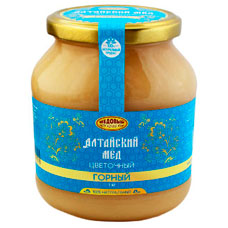
Helps to increase vitality, restore health and improve quality of life. Has a positive effect on the mucous membranes of internal organs, it is useful in cough, diseases of throat, liver, gastrointestinal tract, dizziness and shortness of breath, arteriosclerosis, improving the function of the thyroid gland; is a sedative for nervous diseases
Honey "MOUNTAIN" is a very rare type of honey. In its Botanical composition refers to high-grade honeys. The fact is, that before granting such person the medicinal composition, independently bees actively consume it. They use the composition to the seed, which needs lots of nutrients and protection from external factors.
If you even once tried mountain honey, then you are unlikely to confuse it with something else. He has a very peculiar but pleasant flavor. In many ways, the mountain honey varieties like the smell of spring flowers. It is this mountain honey can be bought only if it is harvested and processed in the Altai. Significantly different from other cultivars and the consistency of the honey composition. It is very thin, translucent and easily mixed.
Where to buy? Our friends and partners.
Our dealers
- Sales in Russia: Trading House "Access Point"
- Outside Sales: MADE IN RUSSIA Ч goods produced in Russia
Our loyal customers, friends and partners
- Ekotoplivo (Ecofuel) Ч Economical and Ecological fuel Ч filling equipment for methane
- CAME.NAME Ч the official online store of the company CAME
- Shikhair Ч professional hair extensions in St. Petersburg and Kaluga
- Company Mezzanine Ч security systems and appliances
- Wedding photographer in St. Petersburg and Moscow
- Access Point Ч installation of video surveillance systems
- Daria Tishkova Ч lawyer for civil cases
- LiteTec Ч CCTV systems
- Zhulay Ч website

|

|

|

|

|
